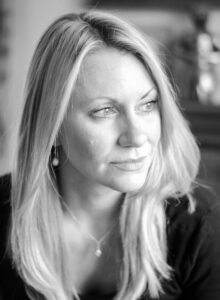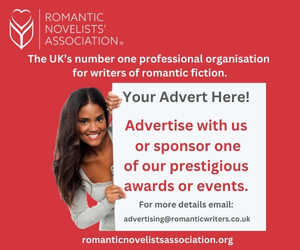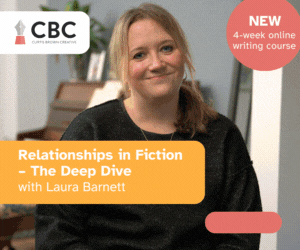Ask An Industry Expert: Jane Dixon-smith
19 April 2019
Today I’m delighted to welcome Jane Dixon-Smith to the RNA Blog. Jane is a freelance cover artist, winner of many awards including #theselfiesawards, London Book Fair 2019, thebookdesigner.com and Chill Out With a Book Cover 2017.
 Hello and welcome, Jane. I know at least one of the finalists in this year’s RoNAs had a cover designed by you. Congratulations on being part of that particular team effort. Could you tell us something of a day in the life of a cover artist?
Hello and welcome, Jane. I know at least one of the finalists in this year’s RoNAs had a cover designed by you. Congratulations on being part of that particular team effort. Could you tell us something of a day in the life of a cover artist?
Yes, I was delighted to learn Jan Jones was shortlisted for A Rational Proposal. My day—well it’s home-based. So many people find the prospect of working from home daunting, based on conversations I’ve had with other people, claiming they’d never be able to separate work from home-life and be constantly distracted. It’s much like a writer’s life really, I work by myself in a home office. I’ve never really found that aspect hard, perhaps because I prefer designing covers to housework! I probably start a new cover design most days, but much of my time is spent making amendments to existing covers, tweaking cover designs that have received feedback and so on. I really enjoy all aspects of the process. Everything’s done via email and I get to work with a wonderful bunch of clients from all over the world.
What are the stages a design has to go through before the finished article is agreed?
Usually I receive the brief from the client and then I’ll search for stock imagery that we could possibly use as a basis for the cover design (or look to commission bespoke photography/illustrations if appropriate). Once I have feedback from clients on this stage I then mock up a variety of designs for them to look at, they then feedback, and this process continues until they are happy with the finished front cover design. I then mock up the back and spine and once agreed the project is pretty much complete apart from the specifications for the printer, such as page count and book size.
The shortlisted book with your cover is a period romance. Are there particular genres for which you especially enjoy designing covers? And any you perhaps find more challenging?
I love designing anything historical, as I write historical fiction myself and have a huge passion for the genre, but I also design a lot of other genres, including sci-fi, thrillers, crime, contemporary, literary, as well as non-fiction. I don’t particularly find any one genre harder than another.
There have been phases in romance covers of a particular style, such as the back view with half-turned face, the chopped off head. Is this something you have to pay attention to or do you go with your (and the author’s) own approach?
One of the things I ask for when a client supplies a brief is 6-10 current covers in their genre that they feel represent their target market. This ensures that not only do I hit the right market with the cover design, but also that it’s current and on-trend. There’s one thing being a trend-setter, but if you’re an indie author or new author to the market then following current styles and aligning closely with competitive authors ensures readers find your book.
Good advice. Does the author always know best in terms of what they want to see on the cover? Have you ever surprised an author with a completely different scene to the one they envisaged?
Yes and no. In theory the author should know their own market best because they will generally read widely in that niche and, even if they don’t realise it, know their audience well, which is where them supplying covers in their genre to me, so I can visualise their market, works very well and is a key aspect of my design process. Sometimes the detail of what an author wants on a cover doesn’t work so well which is where suggestions as to how we could approach the same ideas and themes comes in, and that’s when you can get some really surprising results.
In your experience, what is it the reader wants from a cover?
They want to know they’re going to enjoy the book and it’s what they expect when they open the first page. ‘Good’ cover design comes in many forms. It’s not just about having a beautiful, well-crafted cover, it’s about having a cover that says if you read such and such an author you will love this book, pick me up now. Sometimes authors get too hung up on the details being exactly like their story and not enough about what is truly going to sell their book.
What is it that attracts you personally to pick up a book and look inside?
Aesthetically good-looking covers, or covers which are unusual. Or simply ones which look like they’ve got a good deal of historical action in them, because that’s what’s most attractive to me. Different things will resonate with different people, which is why it’s important for me not to design a cover I want to pick up, but rather that the target reader does!
What’s the best/worst part of your job?
There isn’t really a worst part as such. Sometimes it’s a little frustrating if authors pick one version of a cover when I preferred another, but that’s part of the job and as I’ve worked on covers over the years I’ve become less precious about that and more concerned with ensuring the joint outcome of mine and the author’s collaboration together is on target.
The best part is the fact that I love cover design, it provides me with an income, and with having young children is also gives me the freedom to spend time with them and pick them up from school and so on as my hours are flexible.
Thanks so much for talking to us today, Jane.
For more on Jane’s work see:
Website: www.jdsmith-design.co.uk
Facebook: www.facebook.com/jdsmith-design
*
Jill was talking with Susan Leona Fisher (Website: http://www.SLFisherAuthor.co.uk)




